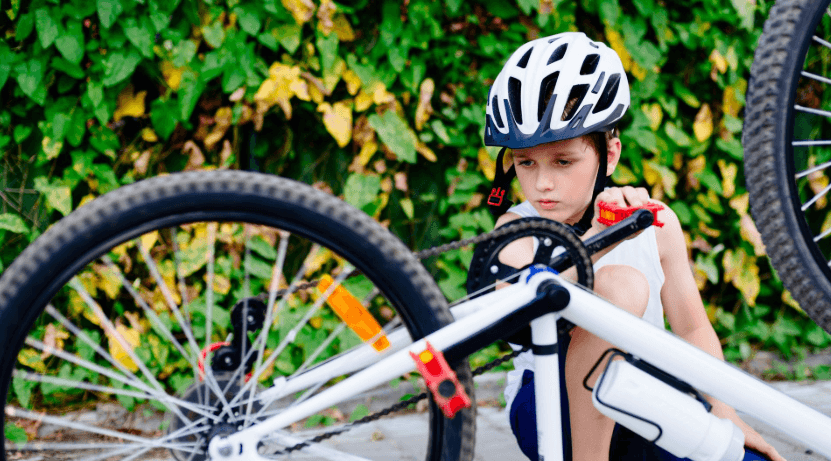Is your roof being overrun by algae stains and moss clusters? Are you tired of coming home and seeing stains and moss on your shingle roof? If so, this article has information on how to get rid of these problems and make sure they never happen again.

Why Should You Clean Your Asphalt Roofing?
- Save on utility bills: You’ll save money on your utility bills if you keep your roof clean. Dirt and algae buildup on a roof can reduce its reflective properties, making it less efficient at reflecting light. When this occurs, your home is more receptive to heat absorption, heating the entire structure. You’ll have to turn on your air conditioner more frequently to keep the temperature in your home under control. As a result, keep your roofs clean regularly.
- Prevent bugs and insects: A filthy roof invites a variety of bugs and insects. To avoid this, maintain a regular roof cleaning routine. If you lack the time, you may always hire an expert to complete the task for you.
- Protect your shingles from the elements: Asphalt shingle roofs are more susceptible to developing mold and mildew than other roofing materials. As a result of this growth, shingles may suffer from moisture damage.
- Aesthetically enhance your home: Whether you intend to sell your home or want to keep its attractive appearance, a clean roof is always a plus. A dirty and poorly kept roof will put off potential clients.
Cleaning Asphalt Shingles: A Step-by-Step Guide
Here are a few simple steps to help you get started with cleaning your asphalt roof:
Step 1: Prioritize safety
Safety is vital for any roof cleaning activity. You certainly do not want to fall from your roof while cleaning! So, how do you ensure that you’re safe when cleaning your shingles? Ensure that you wear slip-resistant footwear to prevent slipping on the wet roof. You’ll also need goggles to protect your eyes from flying debris and thick gloves for handling chemicals. Additionally, ensure that you wear long-sleeved shirts and slacks to protect yourself from these harmful chemicals.
If your roof is sloping, consider securing yourself to the chimney with a safety rope. If not, you can use a safety point to attach the cord. This is a critical step to avoid falling to the ground if you slip. Finally, inform someone of your plans to clean your roof before beginning. It’s reassuring to know that at least one person is aware of your whereabouts in the event of an emergency, such as an accident.
Step 2: Remove Debris
Once on your roof, conduct an inspection. Is there any overgrown debris in the area? If that is the case, remove it! Before you even consider applying cleaning chemicals, clean the surface using your preferred sweep or leaf blower. Removing debris is a critical phase in the roof cleaning process! It will save you time and money in the long run if you don’t have to deal with this extra debris!
Step 3: Gather Your Cleaning Supplies
There are precise methods and criteria for cleaning asphalt shingles. To remove algae stains and other filth from your roof, you’ll need to utilize chemicals like sodium hypochlorite. In any event, never use an abrasive chemical! Abrasive chemicals are not recommended because they can shorten the life of your roof. Only utilize materials that have been tested and proven to be safe for use on asphalt shingles. If you’re not a fan of commercial cleaners, you can always make your own! It’s simple, as you’ll only need equal parts water and chlorine bleach for laundry. You are now ready to depart!
Step 4: Get the Solution Ready
Make your solution by combining a 50:50 solution of chlorine bleach and water. There are several safe roof shingle cleaners that you can use. Don’t forget to make enough of the solution for the roof. Spray the solution with a low-pressure garden sprayer to avoid damaging your roof.
Step 5: Apply the Roof Cleaning Solution
It’s time to get up there and spray the solution to your roof. Spray all the shingles you want to clean with the cleaner, paying particular attention to those that have a lot of algae on them. There is no hard and fast rule about the cleaning solution required. Your asphalt shingle’s cleanliness, the algae levels, and other factors determine the amount of solution needed. Allow the solution to sit for 15 to 20 minutes after you’ve finished spraying your roof.
Step 6: Rinse Your Roof
Rinse the entire solution using a garden hose when the timer goes off. Make sure you’ve removed all of the bleach before moving on to the next step.
Step 7: Remove any stubborn algae
You can’t help but notice a heavy algae growth on your roof in some circumstances. If you still detect black streaks or persistent algae on your roof, scrape it until they disappear. Using a brush or broom with medium-bristled bristles will help loosen and remove them. Don’t apply too much pressure, or you’ll damage your roof.
How to Extend the Life of Asphalt Shingle Roofs
In addition to general cleaning, there are various techniques to efficiently eliminate problems that damage your asphalt shingle roofs. Trim any tree branches that are overhanging above your roof and are either limiting sunlight or making direct contact. Trimming trees doesn’t mean that you tear down that beautiful tree that serves as the centerpiece of your yard.
Clip the branches to prevent future damage and the need to contact your roof contractor. The more sunshine your roof receives, the less probable it is that algae and moss will grow and wreak havoc on your roof.
Conclusion
Please remember that this roof-cleaning advice is only applicable to asphalt shingles. Ensure that the cleaning process doesn’t compromise the structure or integrity of your asphalt roof. If you have a different type of roof, you should check with the manufacturer to figure out how to clean it.







